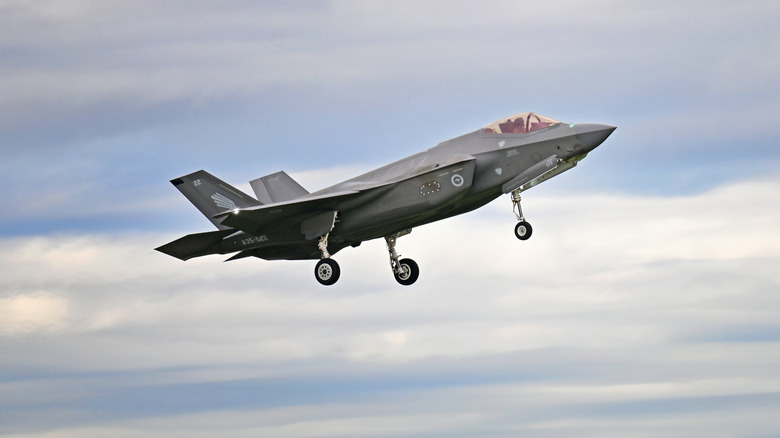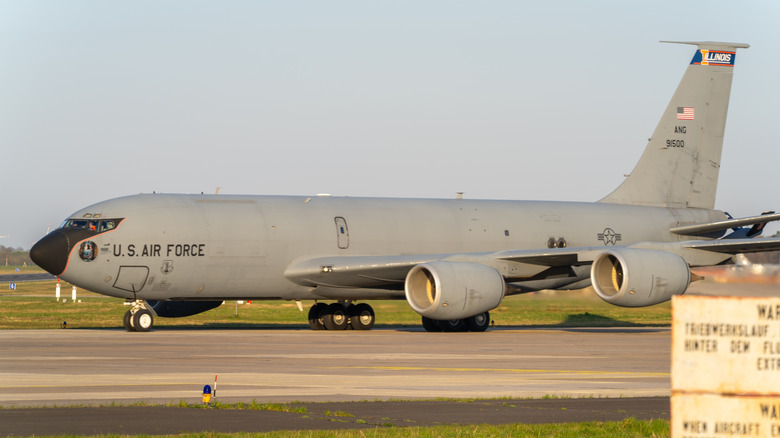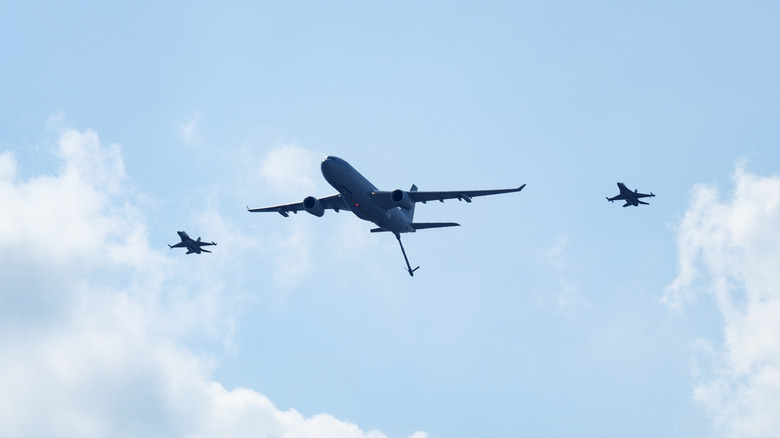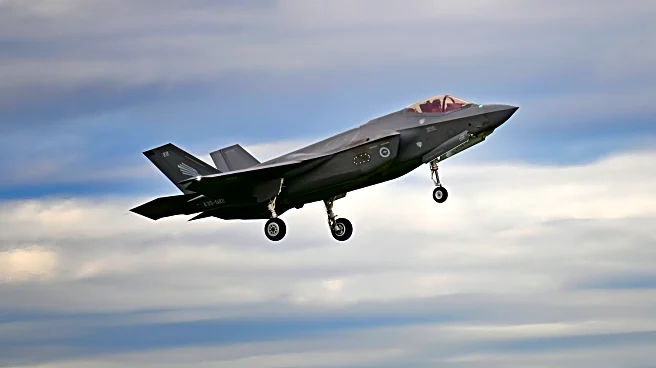
The F-35 (here's what it looks like on the inside) isn't a long-haul aircraft. Its strength is in stealth, situational awareness, and short bursts of firepower, not covering half the globe in a single flight. That said, each variant has a different maximum range, determined largely by design and mission profile.
The Air Force's F-35A can fly about 1,200 nautical miles on a full tank, but its combat radius — the distance it can travel out and back with enough fuel to engage a target and return safely
— is roughly 590 nautical miles. With speeds of around 1,200 mph (1 mile is equal to about .87 nautical miles) when fully loaded, the aircraft can stay airborne for over an hour, or around 33 minutes while in combat. The F-35B, which can take off vertically, sacrifices range for versatility. It typically gets about 450 nautical miles (about 25 minutes) in combat radius. The Navy's F-35C is optimized for carrier operations and has larger wings and more internal fuel, offering the best range of the three: up to 1,200 nautical miles total (over an hour), with a combat radius approaching 600 nautical miles (about 35 minutes). These numbers assume ideal conditions and don't factor in real-world limitations.
Read more: 10 Largest Air Forces In The World, Ranked By Military Aircraft Numbers
Why Tankers Are Crucial If The F-35 Is Going To Do More Than Patrol The Neighborhood

Without mid-air refueling, F-35s can't get very far, especially in contested zones where fallback landing strips are few and far between. Pilots don't just need enough gas to fly a round trip. They also need fuel to dogfight, loiter, or divert to backup airfields if something goes wrong. That means air-to-air refueling becomes a requirement for any operation beyond local reach.
Let's say an F-35A needs to fly 1,000 kilometers into a conflict zone. It can do that — once. But to hang around, complete a mission, and get home, it has to refuel mid-air. And not just once. Real-world scenarios demand a network of support aircraft. A single two-ship patrol 1,500 kilometers out could require a relay of eight aircraft rotating in and out, with tankers nearby to keep them fueled. If the operation is sustained over time, dozens of aircraft and dozens of pilots are needed to maintain tempo.
That's why range becomes a logistics problem. Each refueling point becomes a potential failure point. Lose a tanker to mechanical issues or enemy action, and the whole mission can unravel. That's the logistical wall F-35 operations often hit. For short-range, high-intensity bursts, the plane excels. But for extended patrols or long-range strikes without tanker backup, it's severely limited unless something changes.
External Tanks Could Fix The Range Problem — But Not Without Tradeoffs

The U.S. military is finally working on a fix. Under the F-35 Block 4 modernization program, external fuel tanks are being developed to give the fighter more range without relying so heavily on refueling aircraft. If successful, they'll bring the F-35 closer to operating independently in long-range missions, especially in regions like the Indo-Pacific where tanker availability is limited or risky.
The Israeli Air Force already demonstrated a version of this with its modified F-35I "Adir" jets. On reported deep-strike missions into Iran, Israeli pilots used a mix of drop tanks and conformal tanks — fuel pods that sit flush against the jet's fuselage. These missions were conducted without tanker support, and the aircraft jettisoned the tanks before entering hostile airspace to preserve stealth.
The U.S. approach is similar. The new drop tanks are expected to add about 8,000 pounds of extra fuel, enough to stretch the F-35A's combat radius to over 1,100 miles. That's a major leap from the current 590. In theory, the tanks are designed to be dropped before hitting enemy sensors. But every drop adds complexity, and every added part is another thing that can fail.
Still, for missions where stealth is less important or tanker support isn't possible, these tanks may be the key to unlocking the F-35's full operational range. It's not perfect, but it's progress.
Want the latest in tech and auto trends? Subscribe to our free newsletter for the latest headlines, expert guides, and how-to tips, one email at a time.
Read the original article on SlashGear.












